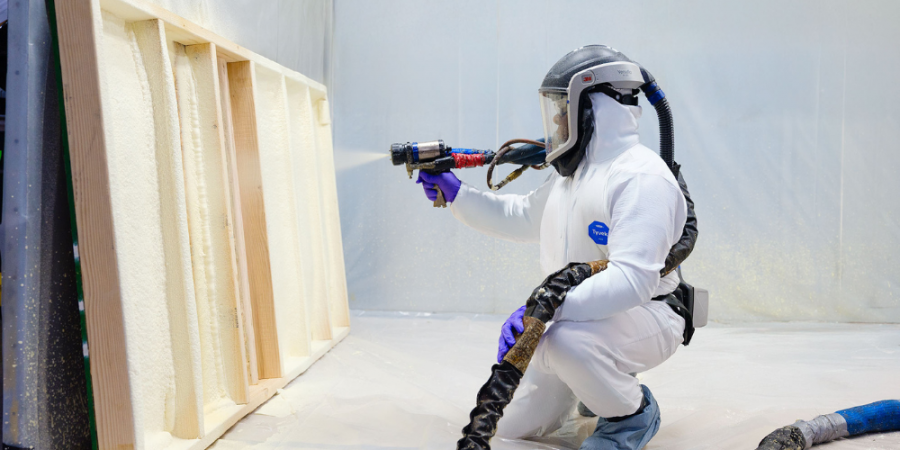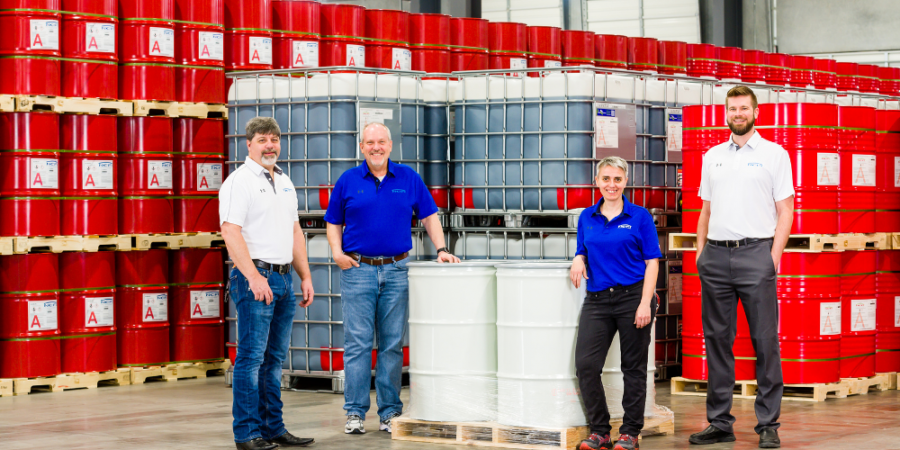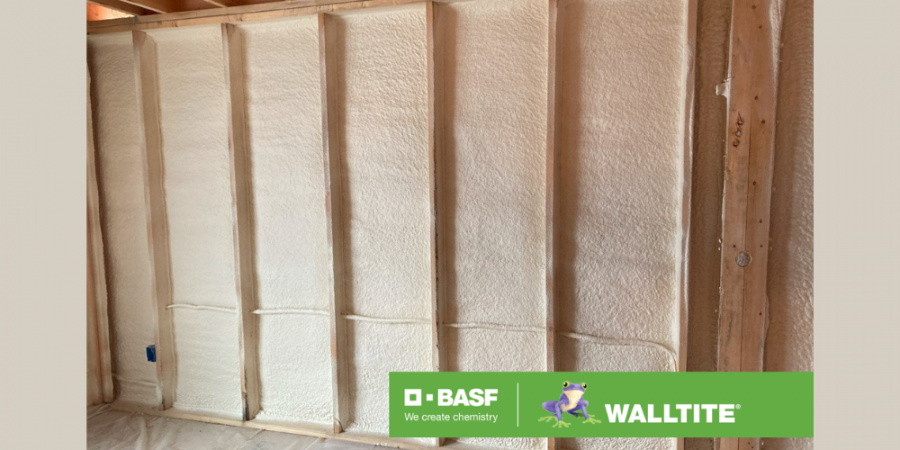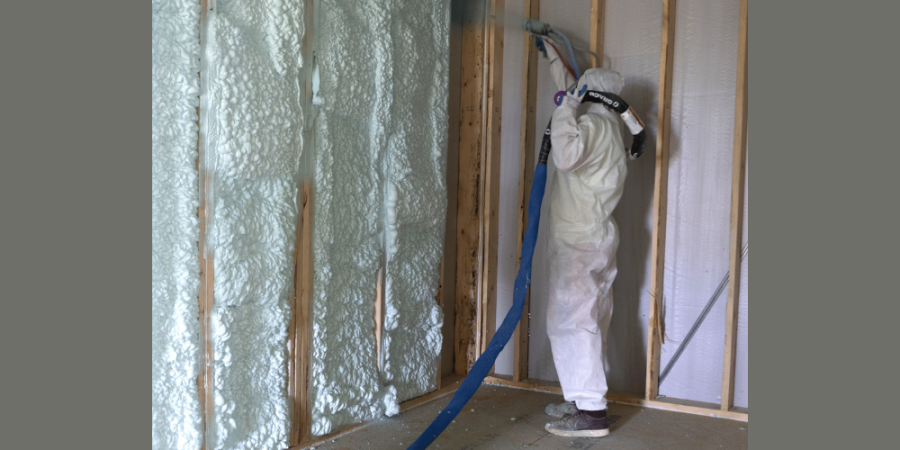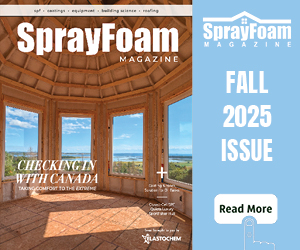Big Birds
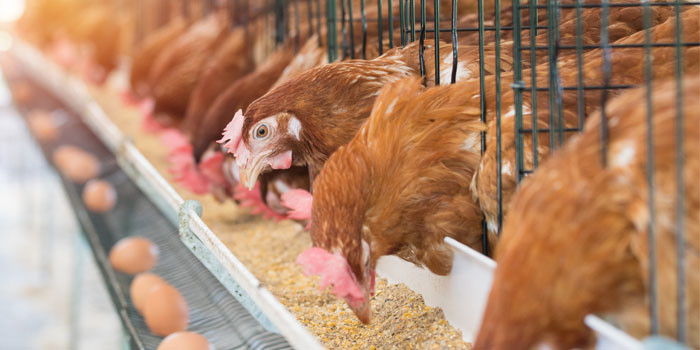

LATE SUMMER 2020 – Spray Foam Magazine – It is well known that residential and commercial projects can benefit from spray foam, but it is much less well known that agricultural projects can also receive significant benefits by using spray foam.
One great example of agriculture projects that commonly use spray foam insulation is poultry houses. Poultry houses need to manage ammonia levels, control air movement, and mitigate heat gain to improve the life expectancy of the birds and optimize growth rates. Additionally, research has shown that tighter poultry houses—those that can build static pressure greater than 0.20 inches—promote better air flow and have a greater chance of growing optimum size birds, while buildings with lower static pressures result in birds that are limited in size due to higher ammonia levels, moisture build up, and overall poor air quality.
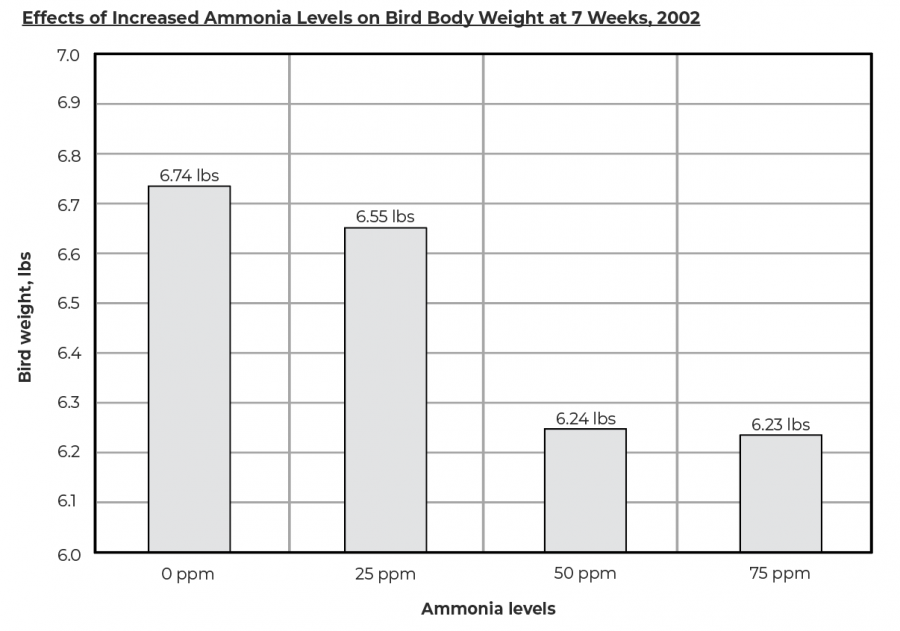
When spray foam is applied to the walls of a poultry house, the walls become tightly air sealed, which reduces leakage points through the walls and improves air movement through the structure. Wind speed and air movement through a poultry house is critical for improving the health, growth rate, and final weight of the birds.
Air movement through a poultry house also serves as a method of ventilation. As air passes through the poultry house it lowers both ammonia and moisture levels.
Ammonia exists in poultry houses due to the reaction of manure, heat, and moisture. The human nose can detect ammonia levels of approximately 20 ppm. After being exposed to the smell for a period of time, growers can get used to the odor and actually most growers are not able to smell ammonia at levels below 50 ppm. However, at levels near 50 ppm or greater, ammonia can affect the growth rate of the birds, as shown in the table, producing birds that are smaller and negatively affecting the yield of the stock. Additionally, high ammonia levels can affect the food conversion rates of the chickens and also make them susceptible to diseases.
Spray foam offers the double benefit of reducing heat gain by providing R-value, and it helps manage moisture, by air sealing the walls and improving ventilation.
Finally, most older poultry houses are poorly insulated. These agricultural buildings operate all year long to achieve optimum flock performance and they have to manage fuel costs involved in maintaining comfort for the flock. Spray foam can easily improve the energy performance of the walls from the typical uninsulated R-1 to around R-10 and the spray foam air seals the walls, which can additionally improve energy efficiency and save as much as 35 percent on fuel cost.
By insulating the walls of a poultry house with spray foam insulation, the operation of the building is improved, including ventilation, air flow, ammonia levels and energy performance, which means healthier poultry stock that can grow to be bigger birds—this is what poultry farmers care about!
Direct any questions you have about statements made in this article to Robert Naini: 817-983-3544 // robert@sprayfoamadvisor.com
*Spray Foam Magazine does not take editorial positions on particular issues; individual contributions to the magazine express the opinions of discrete authors unless explicitly labeled or otherwise stated. The inclusion of a particular piece in the magazine does not mean that individual staff members or editors concur with the editorial positions represented therein.
ABOUT THE AUTHORS:
Robert Naini has a Bachelor’s of Science in Mechanical Engineering and an MBA from the University of Texas in Arlington. With more than a decade of experience on the cutting edge of spray foam insulation, Robert has created Spray Foam Advisor to offer web-based training and education, with videos, articles, blogs and more, to help you get better.
Donovan Smith has an MBA, is a Certified Project Manager with SPFA and he has more than 20 years of experience in the polyurethane/polyurea industry working as a chemist, technical service representative, product manager and application engineer. He can be reached by email at donzel16@gmail.com.
Disqus website name not provided.



